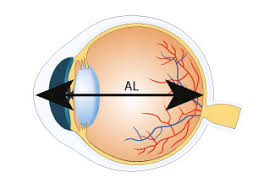Table of Contents
ToggleThe prospect of achieving clear vision without the need for glasses or contact lenses is enticing for many.
LASIK (Laser-Assisted In Situ Keratomileusis), a widely popular corrective eye surgery, offers just that. However, as with any medical procedure, potential candidates often have numerous questions about its long-term implications, including whether LASIK can be detected after several years.
This blog aims to provide a comprehensive look at this question, offering insights that will be particularly valuable for potential LASIK candidates, eye health enthusiasts, and ophthalmology patients.
Understanding the LASIK Procedure
Before answering the main question, it’s important to understand what LASIK entails. The procedure entails the reshaping of the cornea, the transparent anterior segment of the eye, through the application of laser technology. This reshaping improves how the eye focuses light on the retina, resulting in clearer vision. LASIK is primarily used to correct common vision problems such as myopia (nearsightedness), hyperopia (farsightedness), and astigmatism.
During the procedure, the surgeon meticulously creates a thin flap in the cornea utilizing either a microkeratome blade or a femtosecond laser. Subsequently, the corneal flap is elevated, allowing an excimer laser to reshape the underlying corneal tissue. Upon completion of the reshaping process, the flap is carefully repositioned to promote natural healing.
The Immediate Aftermath of LASIK
Immediately following LASIK surgery, patients may experience some side effects such as dry eyes, halos, glare, or fluctuation in vision. These effects typically diminish over time as the eyes adjust and heal. Most people achieve 20/20 vision or better after LASIK, although results can vary depending on individual circumstances.
In the months following the surgery, the eye’s healing process continues, and most residual side effects resolve. By around the six-month mark post-surgery, the majority of patients enjoy stabilized vision with minimal side effects.
Can LASIK Be Detected Over Time?
Now, onto the pivotal question of whether LASIK can be detected five years after the procedure.
The answer lies in understanding both the nature of the surgical changes to the eye and the methods of detection.
Changes in Corneal Structure
LASIK permanently alters the shape of the cornea. Although these changes are not typically visible to the naked eye, they can be detected by an eye care professional using specialized equipment.
Instruments such as a corneal topographer or wavefront aberrometer can map the surface of the cornea and detect the reshaping that has occurred as a result of LASIK.
Detection Through Examination
When an eye doctor conducts a thorough eye examination, they can often detect signs that LASIK has been performed. These signs may include:
- Corneal Flap: Although it heals and becomes difficult to detect over time, the corneal flap created during LASIK can still be observed under certain lighting conditions with high magnification.
- Corneal Thickness and Shape: LASIK typically results in a thinner cornea with an altered shape. Advanced imaging techniques can reveal these changes, indicating that the eye has undergone LASIK.
- Eye Scarring: In some cases, minor scarring may be present at the edge of the flap. These scars are typically subtle and do not affect vision, but they can be indicative of past LASIK surgery.
Long-Term Effects and Considerations
While LASIK is generally safe and effective, it’s essential to consider long-term factors that might affect your decision to undergo the procedure.
Stability of Vision
Most LASIK patients enjoy stable vision for many years following the procedure. However, it’s not uncommon for vision to change due to natural ageing processes or other underlying eye conditions. For instance, presbyopia—a condition associated with ageing that affects near vision—can develop independently of LASIK.
Potential Complications
Though rare, some patients may experience complications years after LASIK, such as glare, halos, or dry eyes. It’s important to discuss these potential risks with your ophthalmologist before undergoing the procedure.
Retreatment Options
In cases where vision changes significantly or if the initial LASIK results are unsatisfactory, retreatment—also known as an enhancement—may be possible. However, the feasibility of retreatment depends on factors like corneal thickness and overall eye health.
The Role of Regular Eye Exams
Regardless of having undergone LASIK, regular eye exams remain crucial. These exams help monitor the health of your eyes, detect any changes in vision, and ensure that your eyes remain healthy post-surgery. Eye exams can also help identify any other issues unrelated to LASIK, such as glaucoma or cataracts, that may develop over time.
Making an Informed Decision
Deciding whether to undergo LASIK surgery is a significant decision that should be made with careful consideration and consultation with an experienced eye care professional. Here are the steps you may consider to make an informed decision:
- Research and Educate Yourself: Understand what LASIK involves, including the risks, benefits, and what you can realistically expect from the procedure.
- Choose an Experienced Surgeon: The success of LASIK largely depends on the skill and experience of the surgeon performing the procedure. Look for a board-certified ophthalmologist with extensive experience in laser eye surgery.
- Evaluate Your Eye Health: Not everyone is a candidate for LASIK. Factors such as corneal thickness, overall eye health, age, and prescription stability must be assessed to determine if LASIK is suitable for you.
- Discuss Expectations and Concerns: Have a thorough discussion with your surgeon about your vision goals, any concerns you may have, and the specifics of the LASIK procedure.
- Consider Alternatives: While LASIK is popular, other vision correction procedures, such as PRK or SMILE, may be more appropriate for some individuals. Explore all available options with your ophthalmologist.
The Takeaway
LASIK offers a promising solution for those seeking freedom from glasses or contacts. While the procedure is largely effective, it does result in permanent changes to the cornea that can be detected through specialized examination techniques, even years later. Understanding these aspects, along with the potential long-term effects and benefits of LASIK, can help you make a confident and informed decision.
For anyone considering LASIK, prioritizing thorough research, consultations with experienced professionals, and regular eye exams is key to achieving the best possible outcomes.
Whether you decide to undergo LASIK or explore alternative treatments, the goal remains the same—to enjoy a lifetime of clear and healthy vision.













